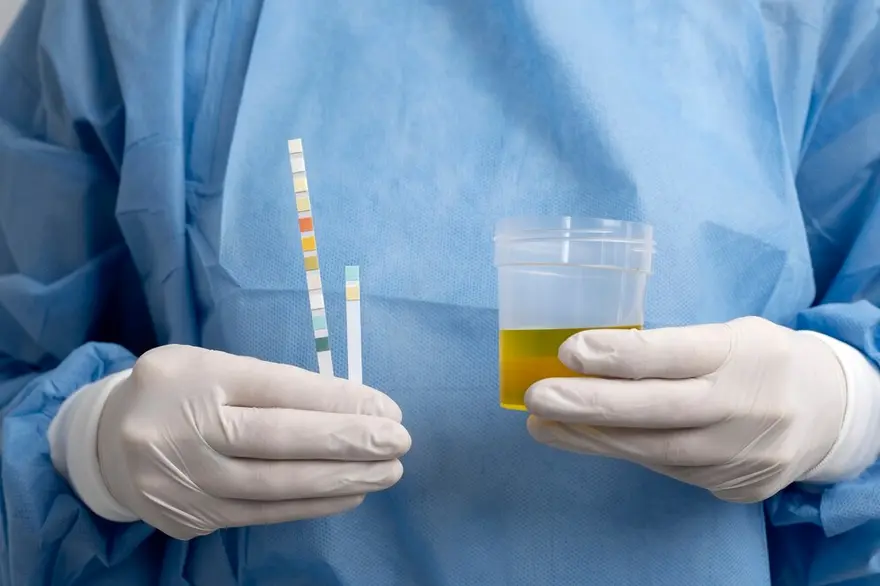Preventive Healthcare
Understanding MCH Blood Tests (Mean Corpuscular Hemoglobin): Insights and Analysis
23746 Views
0

MCH is one of three red blood cell indices measuring red blood cells' size, colour, and haemoglobin content. The other two red blood cell indices are mean corpuscular volume (MCV) and mean corpuscular haemoglobin concentration (MCHC). These three indices can be used together to help diagnose various blood disorders.
What is MCH?
MCH stands for Mean Corpuscular Hemoglobin, which measures each red blood cell's average amount of haemoglobin. Haemoglobin is the protein responsible for carrying oxygen throughout the body. MCH is often used in blood tests to help diagnose different types of anaemia or other blood disorders.
Comparable patterns may be observed in the MCV and MCH datasets. This is because haemoglobin tends to be more abundant in larger red blood cells than in smaller ones. Red blood cell haemoglobin concentration, or MCHC, measures the amount of haemoglobin in a cell about its volume. Unlike the MCH normal range measurement, the MCHC measurement considers the size or volume of the red blood cell.
How is the MCH level determined?
A blood test determines the MCH level called a complete blood count (CBC). A CBC is a routine test that measures the number, size, and content of different types of blood cells, including red blood cells, white blood cells, and platelets.
Here is how the MCH level is determined:
- Blood sample collection: A small blood sample is drawn from a vein in your arm using a needle and syringe.
- Blood sample preparation: The blood sample is centrifuged to separate the red blood cells from the plasma.
- Haemoglobin measurement: The amount of haemoglobin in the red blood cells is measured using a spectrophotometer.
- Red blood cell count: The number of red blood cells in the blood sample is counted using an automated cell counter.
- MCH calculation: The MCH level is calculated by dividing the total amount of haemoglobin by the number of red blood cells.
MCH ranges
The MCH normal range is 26-33 picograms (pg) of haemoglobin per red blood cell. A high MCH (hyperchromia) can be a sign of conditions such as megaloblastic anaemia caused by a deficiency of vitamin B12 or folate. A low MCH (hypochromia) can be a sign of conditions such as iron deficiency anaemia, which is caused by iron deficiency.
Low MCH causes
Several factors can cause low MCH levels. Here are some of the most common causes:
- Iron deficiency anaemia:
Iron is essential for producing haemoglobin, the protein in red blood cells that carries oxygen. When the body doesn't have enough iron, red blood cells become smaller and contain less haemoglobin, leading to low MCH levels.
- Chronic blood loss:
Chronic blood loss can be caused by heavy menstrual bleeding, ulcers, or other conditions that cause ongoing blood loss.
- Vitamin B12 deficiency:
A deficiency in vitamin B12 can lead to megaloblastic anaemia, a type of anaemia characterised by large, immature red blood cells with a low haemoglobin content.
- Folate deficiency:
Folate (vitamin B9) is important for haemoglobin synthesis. A folate deficiency can also lead to megaloblastic anaemia and low MCH levels.
- Thalassemia:
A thalassemia is a group of genetic disorders that affect the production of haemoglobin.
Symptoms of low MCH levels
The symptoms of low MCH levels can vary depending on the severity of the underlying cause. However, some common symptoms associated with low MCH levels include:
- Fatigue
- Pale skin.
- Shortness of breath
- Dizziness or lightheadedness
- Cold hands and feet
- Headache
High MCH causes and symptoms
Causes of high MCH levels:
- Vitamin B12 deficiency or folate deficiency
- Liver disease:
Liver disease can interfere with the production of bile, which is necessary for the absorption of vitamin B12. A deficiency in vitamin B12 due to liver disease can lead to megaloblastic anaemia and high MCH levels.
- Alcohol misuse:
Excessive alcohol consumption can damage the liver and interfere with the absorption of vitamin B12. This can lead to megaloblastic anaemia and high MCH levels.
- Certain medications:
Certain medications, such as hydroxyurea and antiretroviral drugs, can cause an increase in MCH levels.
- Genetic disorders:
Some genetic disorders, such as hereditary spherocytosis, can cause an increase in MCH levels.
Symptoms of high MCH levels:
The symptoms of high MCH levels may vary depending on the severity of the underlying cause. However, some common symptoms associated with high MCH levels include:
- Fatigue
- Pale skin
- Weakness
- Shortness of breath
- Headaches
- Brittle nails
- Pica
Symptoms of high MCH levels
Symptoms of high MCH levels, also known as hyperchromia, can vary depending on the underlying cause and severity of the condition. However, some common symptoms associated with high MCH levels include:
- Gastrointestinal symptoms: Gastrointestinal symptoms, such as nausea, vomiting, diarrhoea, and constipation, can be associated with megaloblastic anaemia, contributing to high MCH levels.
- Neurological symptoms: Neurological symptoms, such as tingling or numbness in the hands and feet, can be associated with vitamin B12 deficiency, a common cause of megaloblastic anaemia.
- Mood changes: Mood changes, such as irritability, depression, and difficulty concentrating, can be associated with vitamin B12 deficiency, contributing to high MCH levels.
Treatment for low or high MCH
Treatment for low or high MCH levels depends on the underlying cause. Here's an overview:
Low MCH:
- Iron deficiency anaemia: A common cause of low MCH. Treatment often involves iron supplementation and dietary changes to increase iron intake.
- Vitamin deficiencies: Addressing deficiencies in vitamins like B6, B9 (folic acid), or B12 can sometimes correct low MCH levels.
- Chronic diseases: Treating the underlying condition can help normalise MCH levels.
- Blood loss: Addressing the cause of bleeding and replenishing lost blood can correct low MCH due to acute blood loss.
High MCH:
- Vitamin deficiencies: Excessive intake of certain vitamins, particularly B6 or B12, can cause high MCH. Adjusting the intake may normalise levels.
- Liver disease: Treating underlying liver conditions can help manage high MCH levels.
- Hypothyroidism: Treating the thyroid disorder might help in cases where it's responsible for elevated MCH levels.
- Alcoholism: Cutting down on alcohol consumption can sometimes correct high MCH levels associated with excessive drinking.
Conclusion
MCH normal range is calculated by dividing the total amount of haemoglobin by the number of red blood cells in the blood sample. It provides information about the average amount of haemoglobin in each red blood cell. The MCH blood test value helps diagnose and monitor various types of anaemia and other blood disorders. Metropolis Labs is a well-known diagnostic and pathology lab service provider in India. They offer various tests, including the MCH blood test, to assess various aspects of an individual's health.













1701259759.webp)









 WhatsApp
WhatsApp